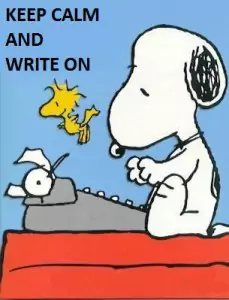 A first draft is a rough sketch of your future piece of writing. Sometimes your first draft may become the final one due to it being rather satisfactory, but in most cases, it requires further work. A first draft is a way to elaborate on the main points of your essay stated in your outline, giving them a sample form. It may seem paradoxical, but while being one of the most important stages of the writing process, most first drafts don’t require a tremendous attention to detail.
A first draft is a rough sketch of your future piece of writing. Sometimes your first draft may become the final one due to it being rather satisfactory, but in most cases, it requires further work. A first draft is a way to elaborate on the main points of your essay stated in your outline, giving them a sample form. It may seem paradoxical, but while being one of the most important stages of the writing process, most first drafts don’t require a tremendous attention to detail.

✅ AI Essay Writer ✅ AI Detector ✅ Plagchecker ✅ Paraphraser
✅ Summarizer ✅ Citation Generator
Steps for Writing a First Draft of an Essay
- Take a closer look at your assignment and the topic if it was given to you by your instructor. Revise your outline as well. This is needed for your clearer understanding of the tasks you must accomplish within the draft, and to make sure you meet the requirements of the assignment.
- Sketch out the introduction of your essay. At this point, don’t get stalled on form; introductory part should inform readers about what the topic is, and state your point of view according to this topic. The introduction should also be interesting to read to capture readers’ attention, but this task has more to do with thoughtful and scrupulous writing, and thus should be left for later.
- Based on your outline, start transferring your ideas to paper. The main task here is to give them the initial form and set a general direction for their further development, and not to write a full paper.
- Chalk out the summarizing paragraph of your essay. It should not contain any new ideas, but briefly reintroduce those from the main body, and restate your thesis statement.
- Read through the draft to see if you have included the information you wanted to, but without making any further corrections, since this is a task for the second and final drafts.
- If you are not sure that you checked everything, send it out for proofreading. Searching through the best essay service reviews, you can get some recommendations of where to look.
Key Points to Consider
- While an outline is needed to decide on what to write, the first draft is more about answering a question: “How to write?” In the first draft, you shape your ideas out, and not simply name and list them, as you did in an outline.
- When you start writing your thoughts down, it may happen that one idea or concept sparks new connections, memories, or associations. Be attentive to such sidetracks; choose those of them that might be useful for your writing, and don’t delve in those that are undesirable in terms of the purpose of your paper (academic, showing opinion). A successful piece of writing is focused on its topic, and doesn’t include everything you have to say on a subject.
- Making notes for yourself in the margins or even in the middle of the text is a useful practice. This can save you time and keep you focused on the essence of your essay without being distracted by secondary details. For example, such notes could look like this: “As documented, the Vietnam War cost the United States about … (search for the exact sum of money and interpret it in terms of modern exchange rates) U. S. dollars.”
- When you finish crafting your first draft, it is useful to put it aside and completely quit thinking about writing for a certain period of time. Time away will allow you to have a fresh look at your draft when you decide to revise it.
Do and Don’t
Do
|
Don’t
|
Common Mistakes When Writing a First Draft of an Essay
– Editing and revising a draft in process of writing. If you stop after each sentence to think it over, you will most likely lose your flow; besides, many people have an internal editor or critic who can’t stand it if the material is written imperfectly. Therefore, first you should deal with the whole draft, and only after that proofread and edit it.
– Paying too much attention to secondary arguments, factual material, and other minor peculiarities. The main goal of the first draft is to sketch out your main ideas; you can fill it with details later. If you think you will forget about an important fact or remark, make brief notes in margins.
– Ignoring the role of a first draft in the essay writing process. Though it may seem you are wasting time working on a draft, you are working on the essay itself. You need to understand how your outline works in full written form.
Follow us on Reddit for more insights and updates.


Comments (0)
Welcome to A*Help comments!
We’re all about debate and discussion at A*Help.
We value the diverse opinions of users, so you may find points of view that you don’t agree with. And that’s cool. However, there are certain things we’re not OK with: attempts to manipulate our data in any way, for example, or the posting of discriminative, offensive, hateful, or disparaging material.
Comments are closed.